LG Electronics 27.8 cu. ft. 4 Door French Door Smart Refrigerator with 2 Freezer Drawers and Wi-Fi Enabled in Stainless Steel
Two crisper drawers give easy access to produce and beverages. Features large capacity, fingerprint resistant, and easy to clean. Smart Home & Wi-Fi enabled to operate & troubleshoot on phone app.
This extra-large spacious French Door Refrigerator from LG features 27.8 cu. ft. of space has double freezer drawers and is ultra-accommodating for all your storage space needs. Boasting a stylish stainless steel finish that is sure to complement your kitchen decor, this refrigerator features a deluxe, extra tall ice and water dispenser that accommodates both pint glasses and pitchers. The Smart Cooling system inside keeps conditions favorable and cool for all of your foods and beverages. With adjustable door bins, split shelves and spacious compartments and drawers, you’ll soon see why this refrigerator is a must-have for every household.
- Energy star qualified to meet or exceeds federal guidelines for energy efficiency for year-round energy and money savings
- Tall ice and water dispensing system in the LG super capacity 4-door refrigerator is one of the tallest around, measuring in at an ultra-accommodating 12.6 in. tall to fit pint glasses to pitchers
- Slim Spaceplus ice system is located on the inside door of the fresh food section, allowing for more shelf space; with added door bin space on the outside of the ice maker, it provides more door bin space for items you need quickly
- LG’s water and ice filter reduces impurities from household water to provide filtered water for up to 6 months (model LT1000PC)
- Electronic controls and LED display operate at just a finger’s touch; they provide easy selection of refrigeration and freezer temperatures as well as water and ice selection, iceplus and child lock
- Smart cooling system is designed to maintain superior conditions within the refrigerator
- Linear compressor reacts quickly to temperature fluctuations and helps keep your food fresher, longer; strategically-placed vents in every section help to surround your food with cool air no matter where you put it
- Spill-proof glass shelves contain spills and simplify cleanup, preventing liquids from leaking onto lower sections; the glide ‘n’ access shelf smoothly slides out for effortless access to hard-to-see and reach food
- Versatile 4-compartment crisper system gives you easy access and more ways to organize your fruits, vegetables and beverages, this refrigerator comes with 2 humidity-controlled crisper drawers, 1 full-width glide-n-serve drawer that fully extends and 1 bonus drawer for fruits and vegetables
- 6 total (2 adjustable gallon-sized) door bins make sure you have ample space to store everything you need. 4 split shelves (3 fixed, 1 folding) make it convenient to store tall items as well as small items
- 17.9 cu. ft. refrigerator compartment and 9.2 cu. ft. freezer compartment provide spacious storage options
- 2 durabase solid drawers are great to store all of your family’s favorite foods; easily removable for cleaning
- Smart diagnosis helps the service center diagnose problems over the phone, helping you troubleshoot quickly
- Premium LED lighting in the refrigerator and freezer section offer long-lasting bright light
- 4-door French door design has 2 refrigerator doors and 2 freezer drawers
- Satin-smooth stainless steel finish is resistant to fingerprints and easily wipes clean with a soft, dry cloth
- Inverter linear compressor is backed by a 10-year limited warranty
Additional information
| Depth (Excluding Handles) | 33.75 |
|---|---|
| Depth (Including Handles) | 36.25 |
| Depth (Less Door) | 29.88 |
| Depth With Door Open 90 Degrees (In) | 48.25 |
| Height to Top of Door Hinge (in.) | 6975 |
| Height to Top of Refrigerator (in.) | 68.38 |
| Product Depth x Height x Width (in.) | 36.25 x 69.75 x 35.75 |
| Refrigerator Width (In.) | 35.75 |
| Certifications and Listings | CSA Listed,Energy Star |
| Manufacturer Warranty | 1 Year Parts and Labor,7 Years on the Sealed System,10 Years on Linear Compressor |

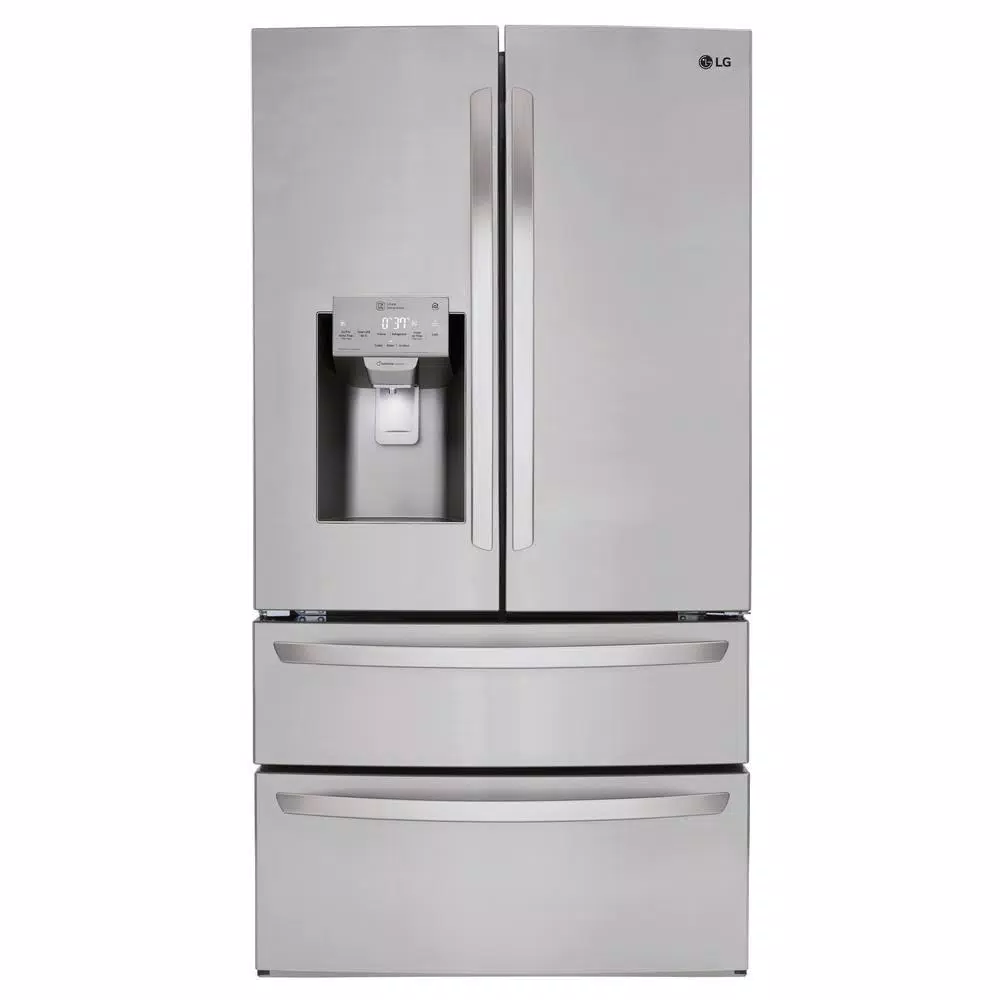
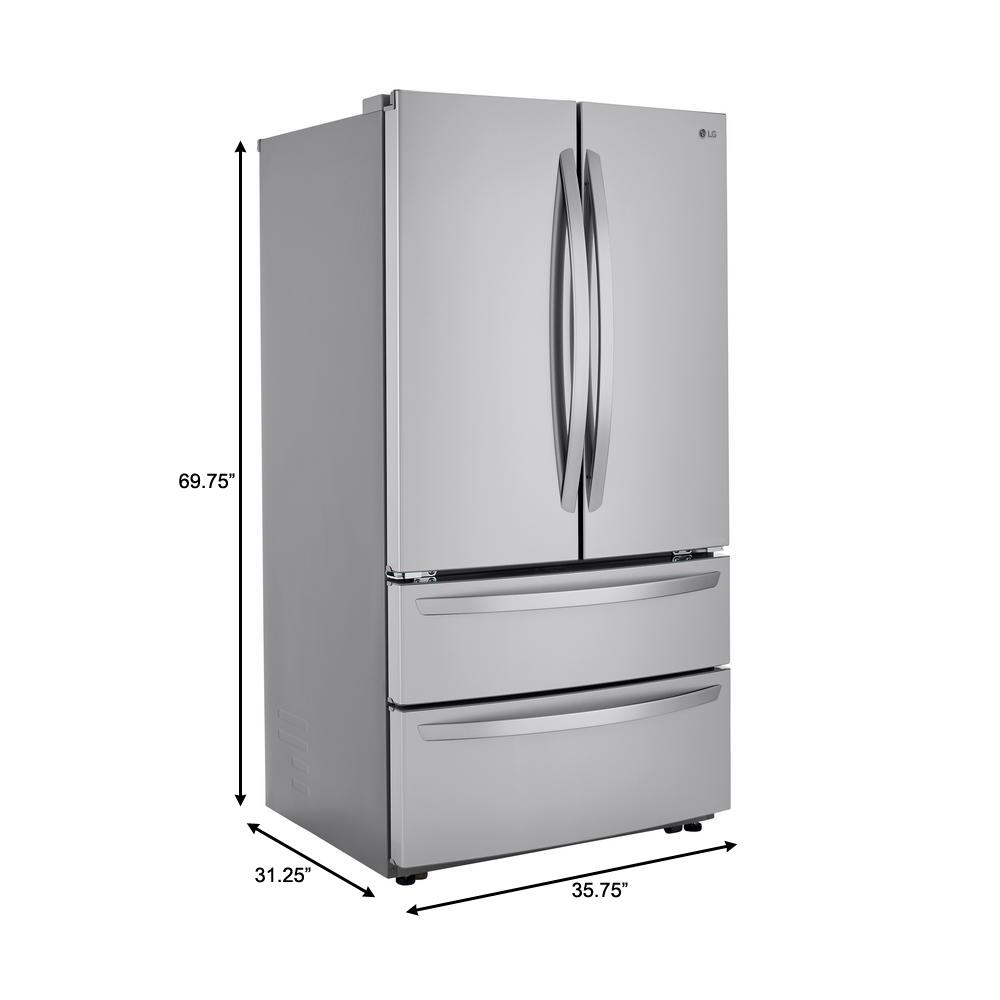
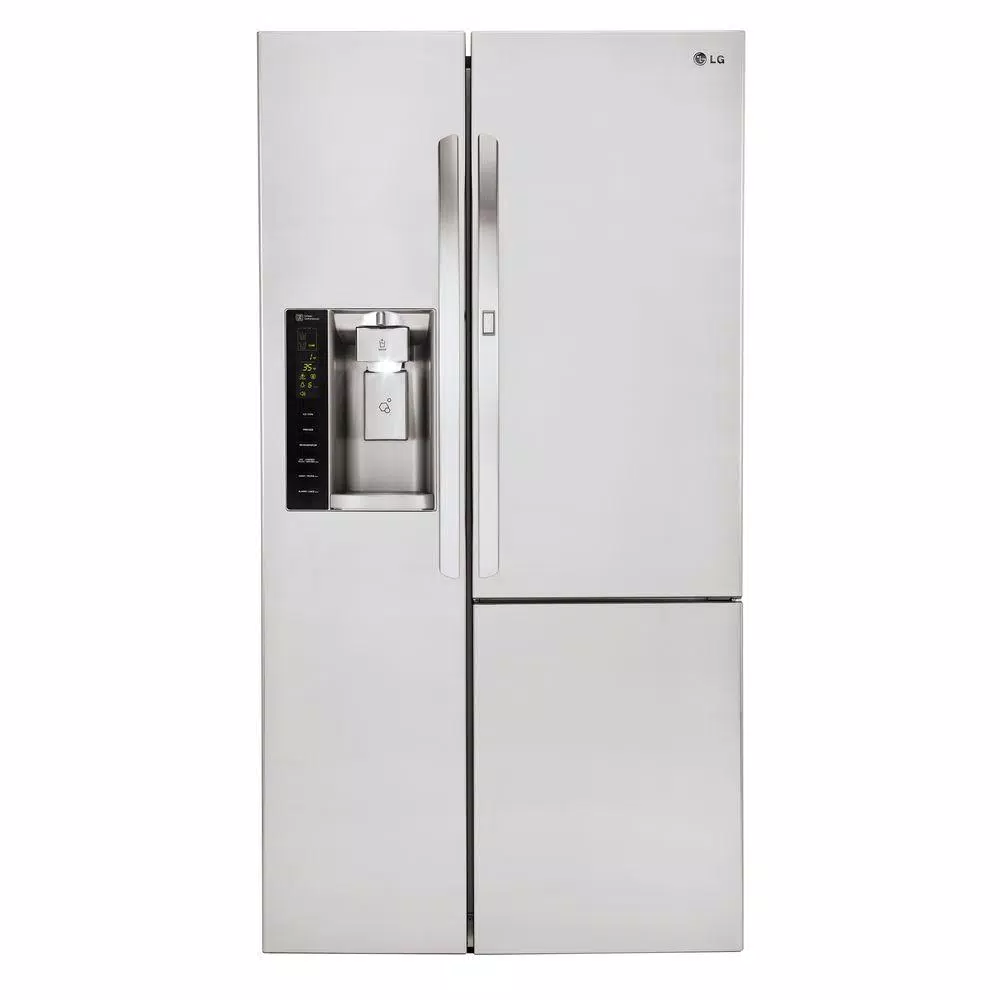
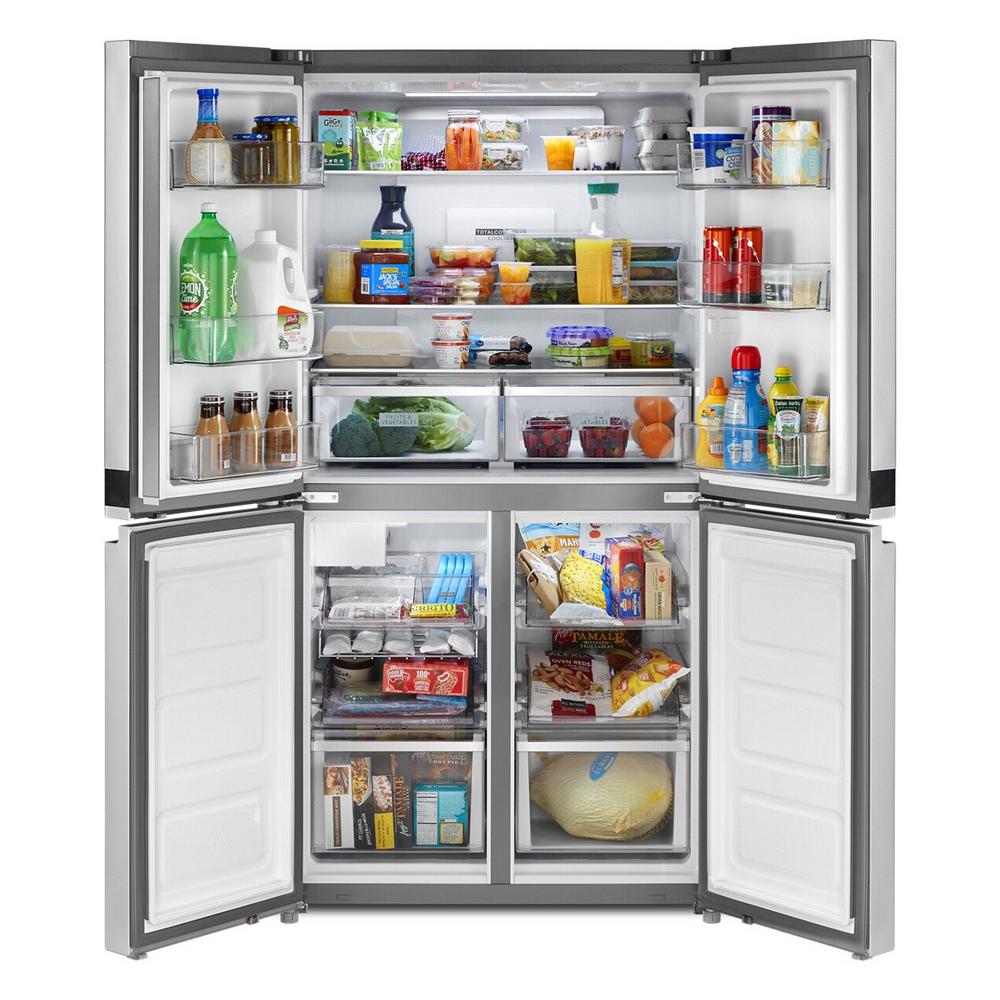
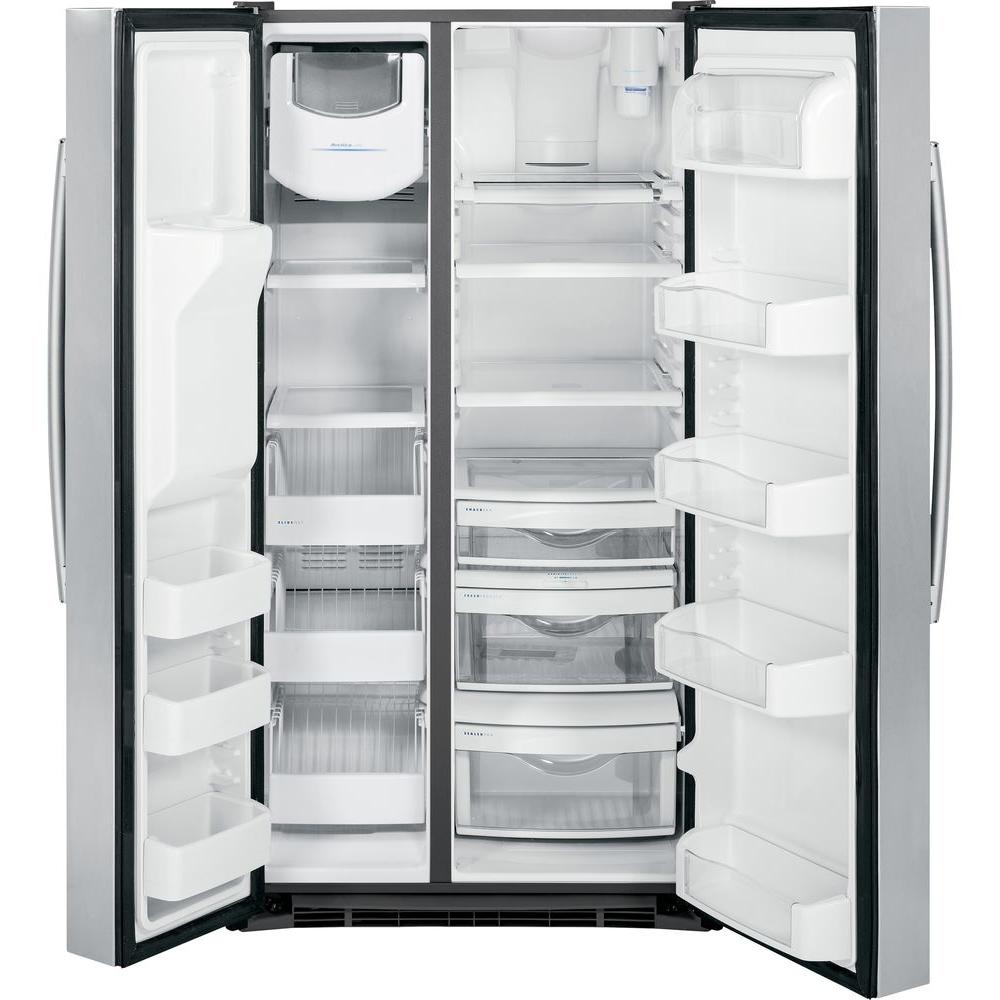
by Anure
I bought this fridge and I am very happy with the cooling vent by the doors which keep my juice and milk fresher for a longer time.
by Bernie
Though I had to wait due to several snow storms it was definitely wort it! I love the looks and how spacious it is. Even when we go shopping it still doesn’t look jammed which makes it very easy to find what we need.
by Roger
We received our refrigerator just a couple weeks ago and for the most part we love it. Our biggest (and so far only) complaint is the icemaker. It is just my wife and me, but we wanted a large refrigerator for when we host family gatherings. The icemaker can barely keep up with the two of us.
by Raman
We have had this for little more than a month. What we like: Spacious, quiet, efficient space organization in refrigerator and the two freezer drawers. For us, the ice compartment being in the door and not using precious refrigerator space was big plus. For families needing a lot of ice, it may be an issue. Suggestion for improvement: the temperature represents set temperatures and no option for internal temperature. Knowing internal temperature would have been nice to have, recognizing that it will not be accurate as actual temperature is not being measured.
by Asheville
After using our refrigerator for 10 months we’ve decided that it is just not the best layout. Limited shelving configurations is a big gripe. We liked the ability to accommodate tall botttles/containers but it takes away from shelf space in return. The middle drawer should have been either freezer OR refrigerator not just freezer would have been a great design. The ice machine is okay but tends to iceup/melt cubes and causing issues and the use of the middle feezer drawer to store ice cubes just didn’t fly. Fit and finish of the unit is great. Well lit interior is great and the three drawers roll in and out with ease. Keeping the exterior clean and shiny is a snap compared to our old stainless steel unit and fingerprints and smudges wipe off quickly with little effort. Love the color as well.
by Chris
I bought this a month ego and my wife are so happy